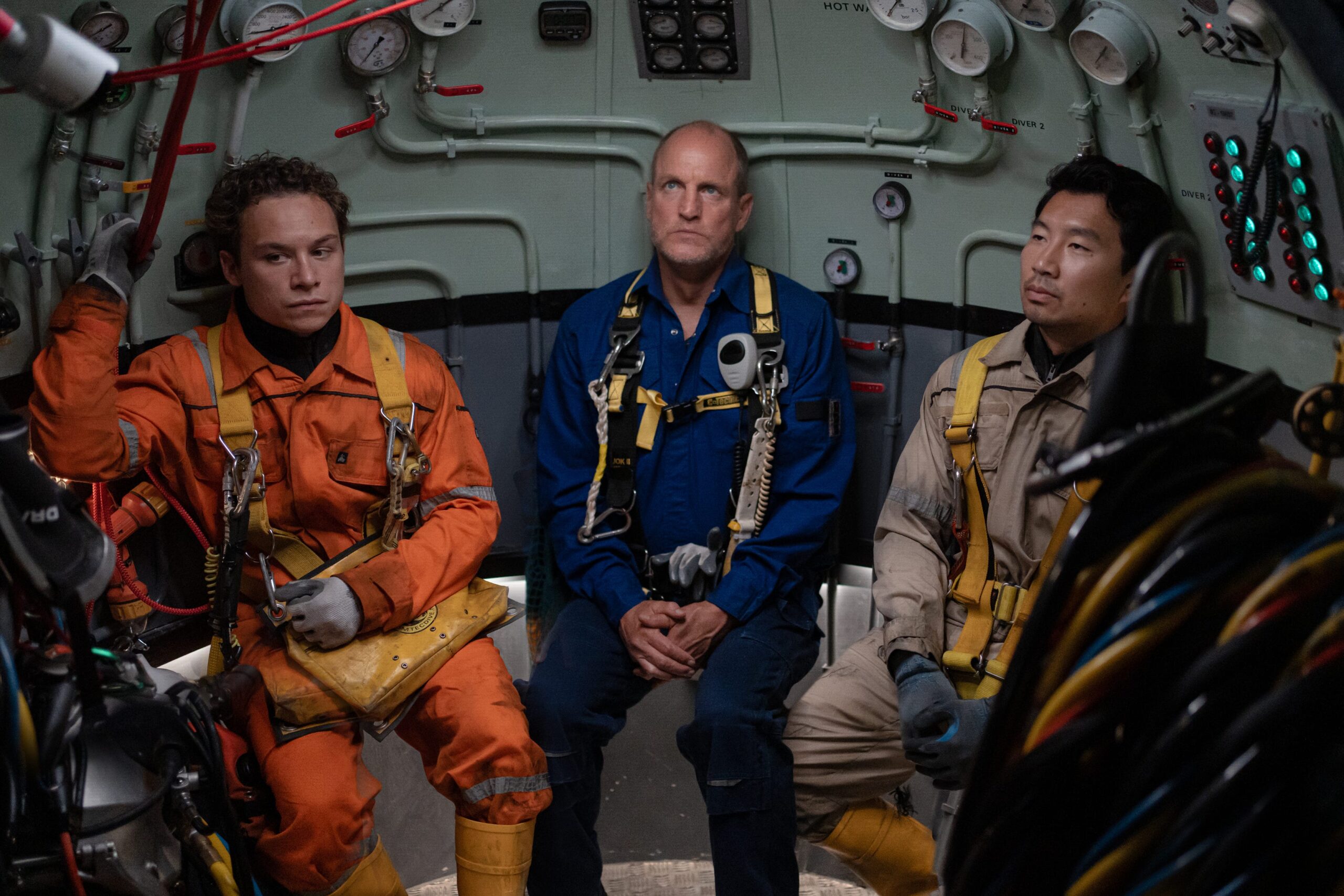
From Seabed Peril to Silver Screen: The Miraculous Survival Story Behind "Last Breath"
A harrowing real-life diving accident, etched into memory for its sheer terror and improbable survival, has been adapted into a gripping new thriller titled "Last Breath." The film, currently in theaters, is based on the events of September 19, 2012, when three commercial divers ventured into the frigid depths of the North Sea for a routine repair that quickly spiraled into a desperate fight for survival.
The divers were tasked with replacing a pipe on an oil rig manifold, a challenging operation conducted 300 feet beneath the surface. The environment itself posed inherent dangers, but the situation rapidly deteriorated due to unforeseen circumstances. Rough waters and equipment malfunctions combined to create a perfect storm. The vessel to which the divers were tethered unexpectedly began to drift, pulling them away from their intended workspace.
Amidst the chaos, one of the divers, Chris Lemons, became tragically separated. His umbilical cable, the lifeline providing him with air and communication, snagged on a submerged metal structure. The cable snapped, severing his connection to the surface and leaving him stranded on the seabed with a dwindling supply of oxygen – estimated at a mere five minutes. His fellow divers, Duncan Allcock and Dave Yuasa, were helpless as they were pulled further away with the errant ship, unable to render immediate assistance.
The agonizing wait that followed was chronicled in the 2019 documentary "Last Breath," which served as the foundation for this dramatic reimagining. The new film stars Finn Cole as Chris Lemons, capturing the diver’s terrifying ordeal in vivid detail. Woody Harrelson portrays Duncan Allcock, Lemons’ mentor, embodying the weight of responsibility and the desperate hope for a positive outcome. Simu Liu takes on the role of Dave Yuasa, the pragmatic colleague grappling with the unfolding crisis.
Alex Parkinson, who directed both the documentary and the feature film, offers a unique perspective on the events, having spent years immersed in the details of this incredible story. He provides a meticulous breakdown of the incident, revealing the technical failures and human responses that shaped the outcome.
The agonizing delay was compounded by a computer malfunction on the ship. It took more than half an hour for the systems to reset and for the crew to pinpoint Lemons’ location. By the time they managed to recover him, he had been without oxygen for a staggering 29 minutes. Lemons, then 32, was found with his eyes closed and limbs motionless. The consensus onboard was grim – they were retrieving a body, not rescuing a survivor.
But against all odds, a miracle unfolded. As Allcock performed CPR, with Yuasa watching in emotional distress, Lemons miraculously regained consciousness. His first words, remarkably, were a testament to his character: "Dave… you OK?"
Parkinson emphasizes the authenticity of this moment, even though it might seem too cinematic to be true. "They really were (his first words)," he confirms. "Because of Lemons’ inherently caring nature, ‘he really came to and immediately thought, ‘What’s wrong with Dave? What happened?’ It’s a beautiful movie moment, but that is true.’"
The film concludes with a title card acknowledging the scientific enigma surrounding Lemons’ survival. Researchers are at a loss to explain how he endured such a prolonged period without oxygen and emerged unscathed.
"Three minutes without oxygen is generally when you start getting brain damage," Parkinson explains. "It’s not only remarkable that he survived that amount of time without oxygen, but also with no brain damage. It’s absolutely astonishing."
While there is no definitive explanation, Parkinson has consulted extensively with neurosurgeons and anesthetists in search of answers. He believes a confluence of factors contributed to Lemons’ unlikely survival, creating a delicate balance that allowed him to slip into a state of physiological stasis.
"The idea is that if he had more oxygen, he would’ve carried on breathing, his body would’ve gotten colder, and he would’ve died of hypothermia," Parkinson speculates. "But if he had less oxygen, he would’ve died of asphyxiation instead. So talking about the insanely good luck of it, I personally think he ran out of gas at precisely the right point of when his body temperature was at the right moment to be able to slip into stasis."
The story doesn’t end with Lemons’ miraculous revival. Just three weeks after his near-death experience, he and his colleagues returned to the underwater site to complete the repair job they had originally undertaken. Lemons is now a dive supervisor and continues to work on the same ship where the accident occurred, a testament to his resilience and dedication.
"It was very important for him to get back on the horse, which is a rubbish analogy when you talk about being underwater," Parkinson jokes. "But it was very important for Dave and Duncan as well, and they all went down together as a team. It closed that (chapter) for them psychologically so they could move on – it’s truly amazing.” The decision to return to the depths, together, served as a crucial step in their healing process, allowing them to confront their trauma and reclaim their professional lives.
"Last Breath" is more than just a retelling of a terrifying accident; it is a story of human resilience, courage, and the enduring power of the human spirit. It explores the bonds of camaraderie forged in the face of danger and the unwavering dedication of individuals who risk their lives in the pursuit of challenging tasks. The film invites audiences to contemplate the fragility of life, the unpredictable nature of fate, and the extraordinary capacity for survival that resides within us all. It is a cinematic experience that lingers long after the credits roll, prompting reflection on the mysteries of the human body and the enduring power of hope in the face of seemingly insurmountable odds.
